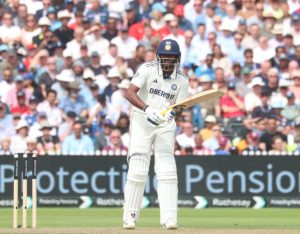Just a day ago, the New York Liberty—one of the flagship franchises in the WNBA—sent shockwaves through the world of professional sports with a capital raise that redefined the game. Valued at an eye-popping $450 million, the Liberty aren’t just making headlines—they’re rewriting the playbook for women’s sports. This isn’t just a valuation; it’s a validation of the immense potential and growing power of women in sports.
Globally, women’s sports are scaling unprecedented heights. Angel City FC of the NWSL now commands a valuation nearing $200 million, while Chelsea FC’s women’s team is drawing independent investor interest like never before. However, the Liberty’s $450 million valuation has set a new gold standard, sending a resounding message: women’s sports have transcended passion projects to become prime-time business ventures.
This meteoric rise is fueled by a trifecta of factors: soaring broadcast revenues, brands championing gender equity, and a digitally savvy younger audience craving authentic, inspiring stories. Women’s sports are no longer “emerging”—they’ve unequivocally arrived.
When the Women’s Premier League (WPL) launched in 2023, skeptics raised eyebrows at the staggering franchise bids. The Mumbai Indians, for instance, shelled out a jaw-dropping ₹912 crore (over $110 million) for a women’s team that hadn’t yet played a single match. Doubters were quick to question the move, but as Nita Ambani famously stated, “We paid ₹912 crore for a team no one had seen play. That’s not a gamble—that’s conviction.”
That conviction has already begun to pay off. The WPL’s inaugural season wasn’t just a sporting event—it was a cultural phenomenon. Stadiums were packed, sponsors clamored for partnerships, merchandise flew off the shelves, and TV ratings shattered expectations. More importantly, it ignited a movement.
In the WPL’s maiden match, Smriti Mandhana walked out to a roaring crowd at the DY Patil Stadium. Her electrifying knock of 84 runs was unforgettable, but what followed was truly transformative. “We used to play in empty stadiums, sometimes with just a handful of families clapping in the stands,” she reflected. “Tonight, there were fireworks, drones, and little girls holding up signs with our names on them. I knew right then—this wasn’t just a league. It was a movement.”
This emotional connection is now driving financial momentum, and it’s why the WPL is poised to become one of the world’s most valuable women’s sports leagues. By 2030, individual franchise valuations are projected to soar between $300–500 million, cementing the WPL’s place on the global stage.
When the WPL launched, some called it bold, others premature. But the franchise owners saw it as a vision. Two years in, that vision is translating into tangible success—not just in fanfare or social impact, but in cold, hard business metrics. Some franchises have already covered 30–40% of operating costs through central revenue sharing from broadcast deals and sponsorships—a remarkable feat.
With over 100 million cumulative digital views across platforms during its first season, WPL teams are now actively monetizing content through YouTube, branded series, and licensing deals. Players like Jemimah Rodrigues and Shafali Verma aren’t just athletes—they’re influencers with massive fan bases spanning ages and genders.
India is no stranger to women athletes who’ve carved out commercial success stories. PV Sindhu, the badminton superstar and Olympic medalist, ranks among the highest-paid female athletes globally. With endorsement deals across fashion, fitness, and finance, she reportedly earned over ₹60 crore in a single year, cementing her status as a brand beyond her sport.
Similarly, Mithali Raj, the former captain of the Indian women’s cricket team, became a household name and a sponsor’s favorite. Her legacy elevated the commercial visibility of women’s cricket long before the WPL, proving that excellence breeds equity—and earnings. These trailblazers have shown that the Indian market doesn’t just respect talent; it rewards it handsomely.
Jessica Berman, Commissioner of the NWSL, encapsulated the WPL’s impact in a 2024 Bloomberg interview: “The Women’s Premier League in India is the most aggressive commercial leap I’ve seen in women’s sports globally. They skipped the slow build-up and went straight to prime time. If they stay consistent, they won’t just set records—they’ll reset benchmarks.”
To realize its full potential, the WPL must play the long game. This means institutional investment, dedicated commercial strategies, year-round fan engagement, and nurturing grassroots talent. India’s deep-rooted love for cricket, combined with its digital dominance, provides a unique platform to build not just a successful league, but a global blueprint for women’s sports.
The New York Liberty’s $450 million valuation isn’t an anomaly—it’s a clarion call. A new era has dawned, where sports are no longer defined by gender but by excellence and equity. With the WPL, India isn’t just participating in this future—it’s leading the charge.
Stay updated on all the latest sports news and insights at cricket betting sites in India.








